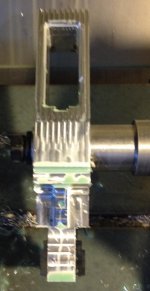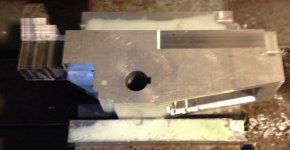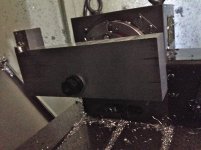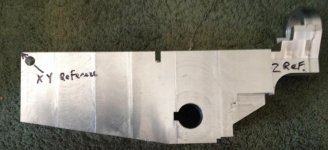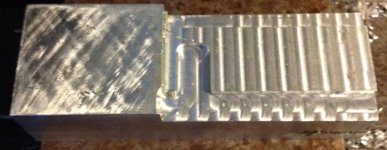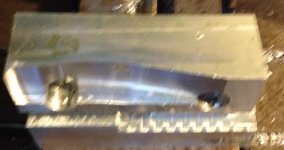72bwhite
Titanium
- Joined
- Sep 26, 2012
- Location
- California, Ventura county
It seems the traditional way to do an AR lower from bar stock is to
start on one of the sides using 3d tool paths and then do the other,
then do the pockets, and extension tube threading.
Well that is the hard way to do it.
it can be done with no time consuming 3d tool paths, and with only
one set of soft jaws.
Simply use a 4th axis to index as shown it also eliminates the need for very long
end mill for the mag well.
You simply cut it for 2 sides.
This can be done with a 4 axis program if you have a 4th axis,
or a manual indexer could be used.
There are 7 index angles used
and a little thought needs to go into your 3d model so corner radius cutters can be used
for the traditional 3d path spots.
this is an AR308 lower

This is side one completed with the corner radius labeled

one way to do the RT


Setting A axis to 0
this one happens to be an AR308 but the same principals can be used on the AR15 lower
start on one of the sides using 3d tool paths and then do the other,
then do the pockets, and extension tube threading.
Well that is the hard way to do it.
it can be done with no time consuming 3d tool paths, and with only
one set of soft jaws.
Simply use a 4th axis to index as shown it also eliminates the need for very long
end mill for the mag well.
You simply cut it for 2 sides.
This can be done with a 4 axis program if you have a 4th axis,
or a manual indexer could be used.
There are 7 index angles used
and a little thought needs to go into your 3d model so corner radius cutters can be used
for the traditional 3d path spots.
this is an AR308 lower

This is side one completed with the corner radius labeled

one way to do the RT


Setting A axis to 0
this one happens to be an AR308 but the same principals can be used on the AR15 lower




